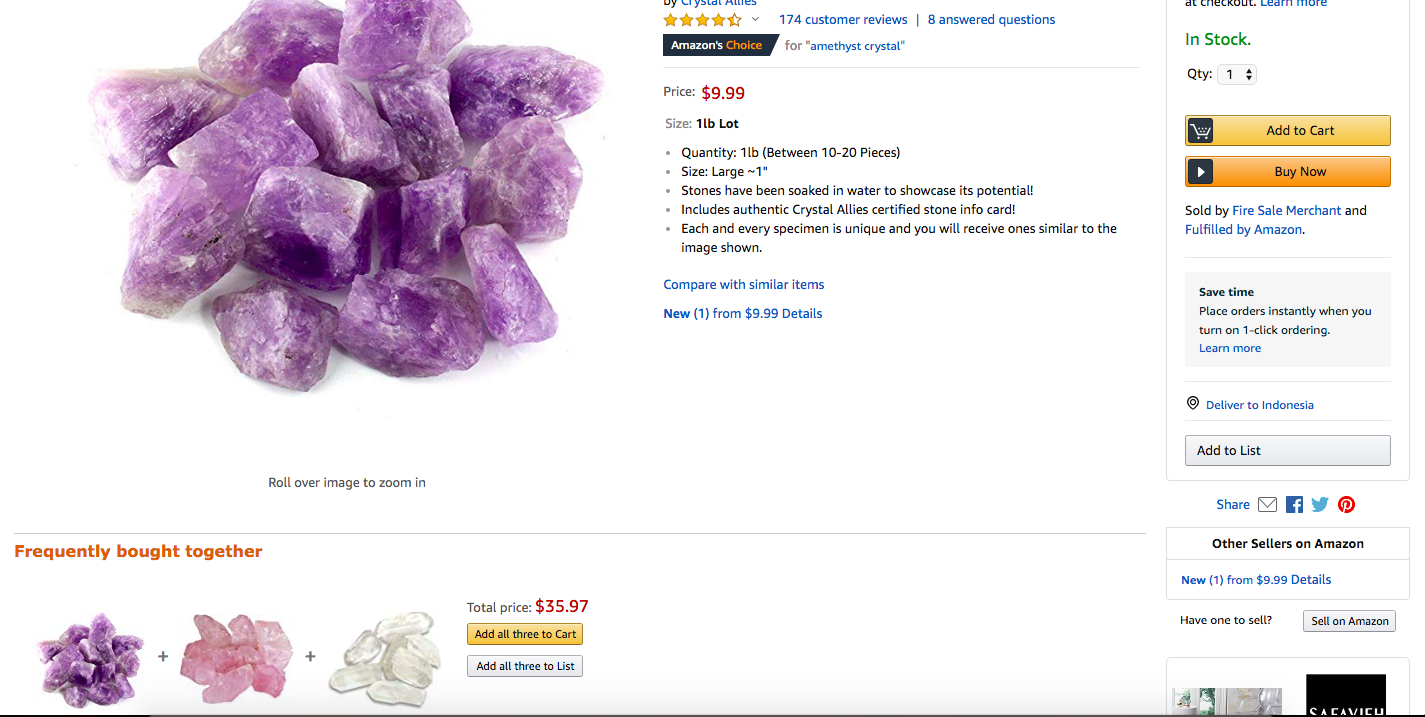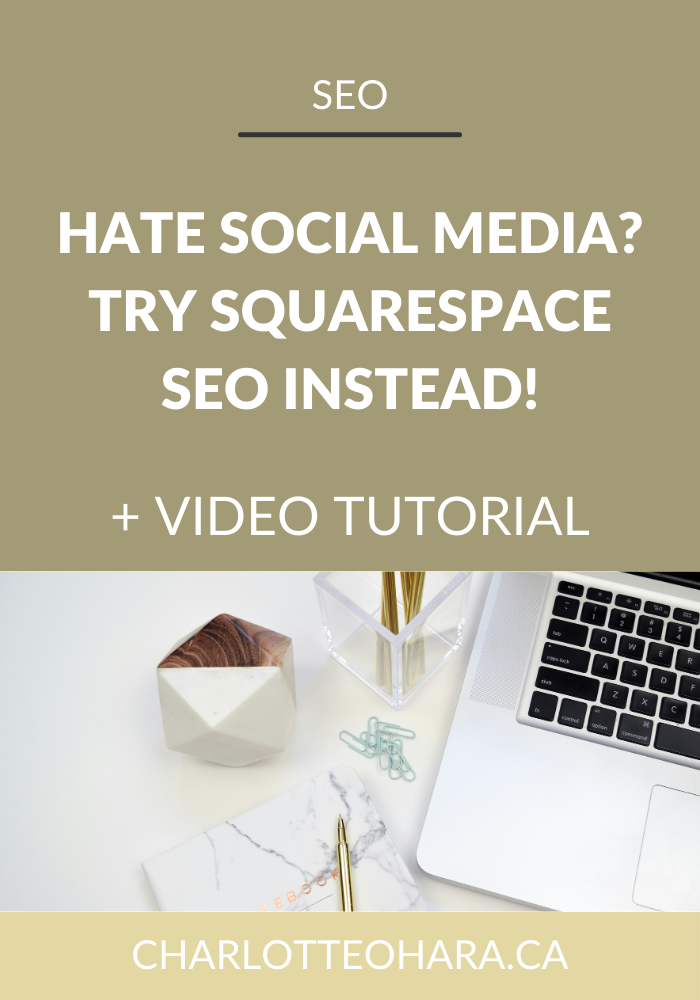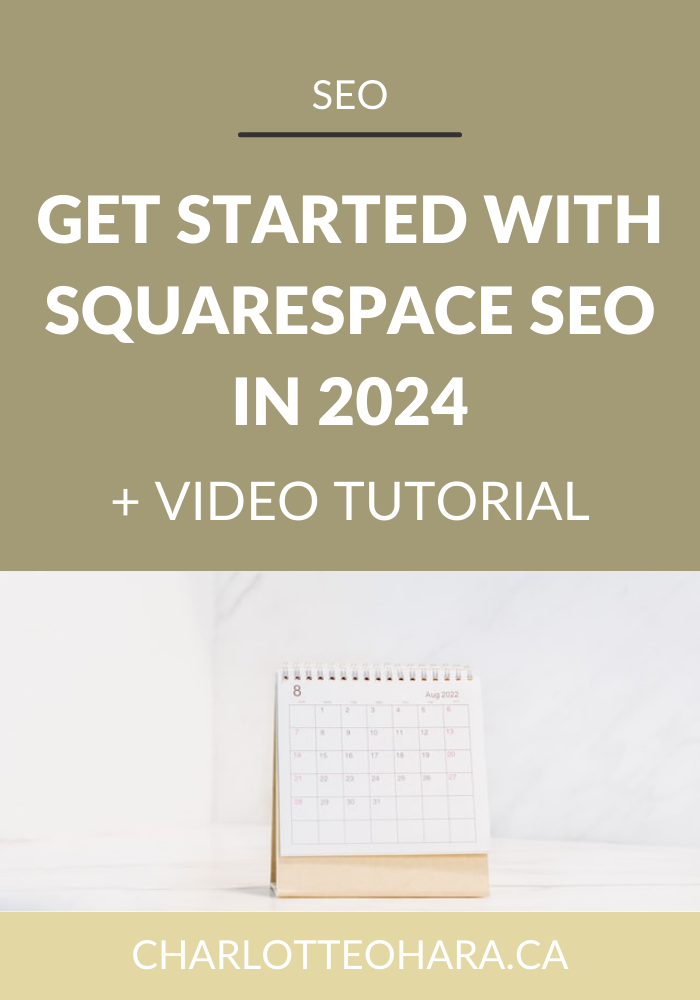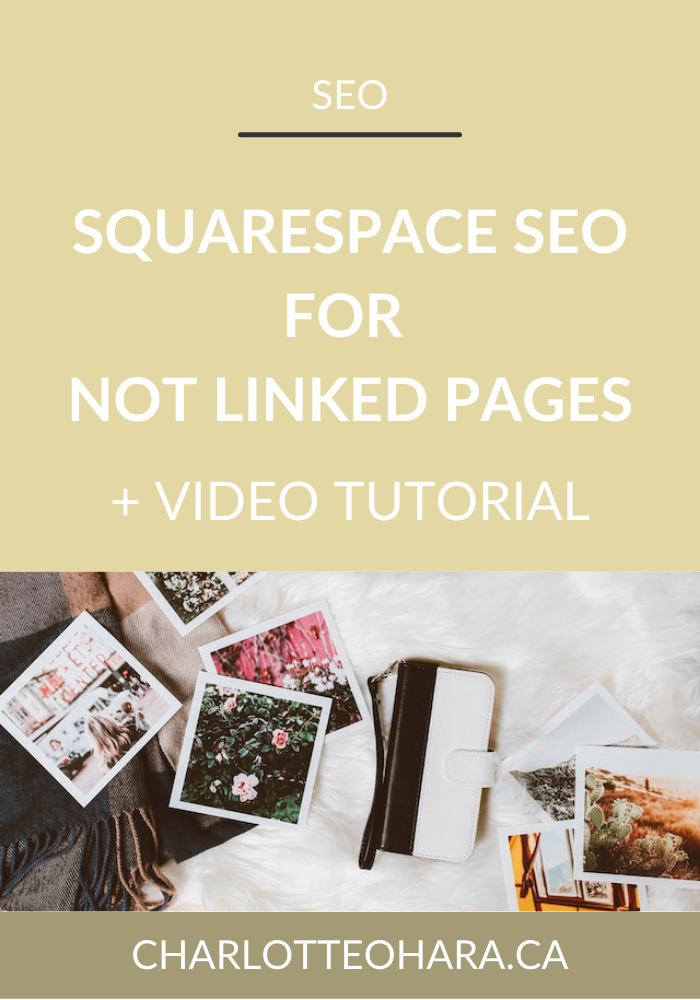6 Q&As about Squarespace SEO for e-commerce websites and product based businesses
6 Questions and Answers about Squarespace SEO, e-commerce and product based websites
Back again with another round of real reader Squarespace SEO Q&As!
A while back I tried out a new type of blog post where I answered 5 real reader questions about Squarespace SEO. I picked questions that I get asked time and time again, and shared my answers in a public blog post so that everyone could be on the same page. That first Squarespace SEO post was super popular so I followed it up with another post, 5 MORE answers to real Squarespace SEO questions I’ve received recently.
Well the numbers don’t lie - those posts were a huge hit!
We’re back at it today with another round of Squarespace SEO Q&As that come directly from you, my readers and audience. But this time, our focus is on e-commerce and product based websites.
As a Squarespace designer and writer who blogs/creates a lot of online content about the topic, people have come to know and think of me as an expert in this (super small) niche of Squarespace SEO - heck, I literally created a whole course about it!. I don’t say this to #humblebrag but to let you know that thousands of people find my website every month through Google searches about “Squarespace SEO” and they usually end up sticking around and asking more questions. I want to share some of those real life questions about Squarespace SEO that have landed in my inbox recently, mostly coming from my newsletter subscribers (you guys are the best!).
You know how they say that there’s no such thing as a dumb question? I truly believe there isn’t - everyone starts out as a clueless beginner, a total newbie who has no idea what they’re doing. We only improve and get better by asking questions, learning as we go and seeking information from people who are a few steps ahead of us.
That’s why I’m so excited to share these real crowd-sourced Squarespace SEO questions with you today. I know that if one person is taking the time to ask the question, there are plenty of other people who have the same question but are too shy to hit ‘send’ on that email to me. I hope that many people can benefit from these answers and see that they aren’t alone in their questions!
Remember that SEO is an art, not a science. There’s so much to learn about Squarespace SEO which is why I have written about it a lot - it’s the most popular topic on my blog by far. Check out my Squarespace SEO page for more resources, blog posts & video tutorials and get your copy of my Squarespace SEO Checklist below for free!
SQUARESPACE SEO SERIES
This article is part of my series on Squarespace SEO. I have so many tips to share on the subject that it would have been crazy to put it all in one article! There are many misconceptions about Squarespace SEO which is why I've dedicate so many posts to this topic. Enjoy!
Click to view all posts in the Squarespace SEO Series
Visit my Squarespace SEO page for lots more resources.
6 Q&As about Squarespace SEO, e-commerce and product based business websites
Click play above or watch the video on Youtube
Question 1 : “What should I do about discontinued products, especially if they were ranking well for SEO and drove a lot of website traffic?” / “I discontinued a product, should I keep the product page up or delete it from my website? How does that affect SEO?”
Answer : Set up a redirect to a newer, related product page URL. All the SEO value that you have accumulated up until now will transfer or carry over to the new/current product page instead.
You can create URL redirects on your Squarespace website to forward visitors away from (product) pages that don't exist anymore and instead send them to active pages. There are two options here, either it can be a permanent change (301 redirect) or a temporary change (302 redirect).
Based on the question I assume that the focus is on 301 permanent redirects because that’s the most common/likely scenario, so that’s what I’ll answer to here.
301 redirects tell browsers to go to a different URL when someone clicks a link to a nonexistent page. They also tell search engines (like Google, Yahoo, Bing, etc.) that a page has moved, and search engines transfer the old page's Page Rank to the new page. To use a 301 redirect, the original URL can no longer exist.
So, let’s say that you have discontinued a certain product and no longer sell it on your website, you’ll definitely want to set up a 301 redirect on your Squarespace website so that you don’t lose out on all the SEO goodness.
Click here for full instructions on how to set up 301 URL redirects on your Squarespace product pages.
Related : Everything you need to know about permalinks and Squarespace SEO
Question 2 : “How can I use SEO to make more product sales?”
Answer : This is a pretty broad question and there are lots of different ways I could answer this but I’ll give it my best shot.
SEO is all about increasing traffic to your website and connecting your website content with online searchers, who represent potential customers. It’s all about getting the right people onto your site so that you can introduce them to your offerings or provide value in some way. In the case of e-commerce or product based business, your goal is to maximize SEO so that you can can reach potential customers and drive more sales.
The first thing you’ll want to focus on in on-page SEO and making sure that your Squarespace website’s settings are filled out for SEO. You’ll want to format the pages on your website for best SEO in a way that serves site visitors (who are your potential customers) as well as search engines (like Google) who are indexing your content and will return it in online searches. Also, keywords are going to play a huge role here so make sure that you are super clear about what keywords you’re targeting and that you’re including them on product pages, in descriptions, image names, etc.
So your first priority is to get more people onto your website and SEO will definitely help you on that front.
SEO can also help you take things a step further to increase product sales in other, less obvious ways.
First of all, you can (and should!) link internally to other products on your website. Use these internal links to showcase related products or other products that people have bought if they are doing a similar search. The goal here should be to suggest relevant products that the site visitor/potential customer might also be interested in.
Not only is this a tried & true way to drive sales, it’s also really good for user experience (UX).
Amazon is probably the most famous example of an ecommerce platform that does this really well (see screenshot below) but you can set up something similar on your own Squarespace website, to showcase related products.
Showcasing related products has real SEO benefits and will undoubtedly help you to make more sales on your website.
To add related products in Squarespace, you’ll want to add a summary block to the Additional info section of the product item’s description. You can also do text links to related products within the product description, but having a visual element to show the related product will improve conversion rates for sure.
Related : Have you set up a Google My Business profile to go with your Squarespace website?
Question 3 : “Any tips for including products on my Squarespace website’s homepage? Does that actually have any SEO benefit or should I keep products on “Product” pages?”
Answer : Your homepage is often the first time that site visitors are “meeting” you and your brand, it’s their initial introduction. When they first land on your homepage, they’re essentially clueless and don’t know who you are or what you offer yet.
So don’t shy away from the selling process right from the start - instead, put your top products directly in front of site visitors. Whether you’re an e-commerce business or just sell products on your website, include them on your homepage.
One of the best ways to do this is by showcasing top/best selling products on your home page. Make a section on the homepage that includes a few top rated or best selling products and that way you can get those in front of visitors from the very start. A popular way to do this with Squarespace is to create a sub-page on your Index home page and then add a summary block that includes top sellers (you can set up “tags” for the best selling items and then select that tag in the summary block display option).
Here’s how that would look if I did that on the homepage of my website, charlotteohara.ca:
In the example above, I’ve created a sub-page on my homepage’s Index page then I inserted a summary bock. I selected Products from the content options, and then from here I can go through the other settings and customize how it all displays. Easy!
Another way you might include products on your homepage is by highlighting products that are related to a certain sale. For example, if you’re running a sale specifically on a certain product category and not your entire inventory, you can include those specific products on your homepage product highlight section.
Either way, including a few products on your homepage is a great way to drive sales and it catches people’s attention and interest from the start of their session or the first time they land on your website’s homepage.
Also, this tactic reduces the likelihood of a bounce and keeps people on your website, clicking through products and other offerings. This is good for user experience but bounce rate is also an SEO factor that search engines take into consideration.
Question 4 : “How can I write good, SEO rich product descriptions?” / “What should I include in product descriptions for SEO to pick up on?”
Answer : When it comes to writing a good, SEO-friendly product description, the goal should be to give the site visitor/potential customer all the information they need to make a purchase and complete the sale. Write in natural language and don’t shy away from lengthy product descriptions or sales pages!
Tailor product descriptions for both your audience AND search engines. Product descriptions that are SEO friendly and valuable for customers should:
outline product features
use simple, clear language
be formatted and easy to read : include things like bullet points or numbered lists
use calls-to-action (CTAs) that prompt & motivate a sale
Aim to have at least 1000 words of description on all product and/or category pages for best results. Also, make sure that you are using your keywords at least 3-5 times throughout the product description. Focus on long-tail keywords for your products because those are easier to rank for and will drive much more traffic and sales your way.
Related : What are keywords and how do they relate to Squarespace SEO?
Be sure to include the keywords in:
product tags/categories
product titles
product description headers and body text
product images (title, description, etc.)
product url slug
Remember, without text Google and other search engines have no way to “read” and index your content or products. And without that information, they can’t send organic search traffic to your site, which means fewer sales for you.
Question 5 : “Should I focus on blogging or link building for my e-commerce shop?” / “Is it more valuable to blog or build backlinks to my products? What SEO strategy is more effective for e-com?”
Answer : Ohhh, I LOVE this question so much and hope I don’t frustrate you too much by saying that you need to do both :)
Yes it’s a lot of work to blog and work on a link building strategy but trust me, it will pay off.
Start off by creating great content on your website that showcases, supports and highlights your product offerings. Of course you’ll focus on on-site SEO for your web pages and blog posts, but really blogging and content creation is key here. You want to publish frequent, valuable blog posts that demonstrate the value of your product and/or incentivize a customer to purchase it. All of these blog posts also give search engines more content to index and therefore provide you with more opportunities to show up and rank in search results for the keywords you’re targeting.
Related : Squarespace SEO Series : 9 tips for blogging
At the same time, however, don’t forget about link building! You should definitely be trying to secure as many quality back links from high domain authority websites as possible. There’s enormous value here so don’t skip it.
Related : Benefits of backlinks for Squarespace SEO
Focus on product reviews, getting featured on blogs or online publications, holiday gift guides, product roundups, etc. All these links to your products on other websites will get your content/products in front of a wider audience, and they will help to drive even more traffic back to your website. Google will also see that you’re being linked to by other relevant sites and they will reward you for that - SEO goodness!
Question 6 : “What kind of blog posts should I write if I have an e-commerce shop?” / “I don’t understand how blogging helps sell products on my website”
Answer : Like I mentioned above, blogging and content creation is a major part of any SEO strategy, and this is especially true if you have an e-commerce shop or sell products on your website.
Blog posts help generate a significant amount of inbound traffic to your website and therefore to your e-commerce shop and/or product section. For best SEO results, you definitely want to focus on content creation and blogging as product promotion.
Whenever possible, prioritize long-form blog post content that includes lots of images/videos of your product(s) because that’s what’s best for SEO. Make sure that you’re including keywords throughout the blog posts (in the title, headers, body content, images names & descriptions, url slug, etc.) because that’s what search engines are going to be scanning and indexing. Also, if you’re trying to use blog posts to highlight (and sell) products, then make sure that your posts are super visual - include lots of images and ideally video demos (especially for physical product) because that will help you rank higher AND has a higher conversion rate. Double whammy!
Here are a few blog posts ideas that are great for e-commerce/products:
“versus” style posts (e.g., ‘product X vs product Y : which one is better?’)
product comparison (e.g., ‘when to use product X and when to use product Y’ or ‘product X and product Y : the great debate’)
product benefit posts (e.g., ‘the benefits of product x for x result/outcome’)
user generated content features (e.g., ‘here’s how our customers styled our product X’)
holiday gift guide (e.g., ‘father’s day gift guide 2019’ or ‘the best of our Black Friday 2019 sale’)
roundup posts (e.g., ‘our best selling items of the week’)
top 10 lists (e.g., ‘top 10 gardening gloves for gardeners in the pacific northwest’)
seasonal trends or style forecasts (e.g., ‘the best graphic t-shirts to wear this festival season’)
Related : My 8 step process for creating and publishing blog posts
Final Thoughts
I’m always thrilled to hear from my blog readers and newsletter subscribers that you’re enjoying this Squarespace SEO content. SEO can definitely seem like an overwhelming topic when you’re first starting out and I’m happy to help guide you through it!
The questions above are just a few examples of Squarespace SEO inquiries I receive on a regular basis and I hope that the answers clear things up and point you in the right direction to learn more.
If you haven’t already, check out the other Squarespace SEO Q&A blog posts that I’ve done:
5 answers to real squarespace seo questions that i’ve received recently
5 more answers to real squarespace seo questions that i’ve received recently
Now it's your turn to tell me, what Squarespace questions are keeping you up at night? Are you just getting started with Squarespace SEO or have you already dabbled in it? Are these answers what you’d expect to see? How about products and e-commerce, how does that work on your website and do you have any other SEO related questions?
Leave me a note down in the comments below and I’ll do my best to answer them. No matter what type of website you have, it will benefit from SEO so I encourage you to start where you are and work on improving your SEO a little bit every week.
If you want more SEO goodness, be sure to check out my Squarespace SEO page for all resources on the topic.
You can also sign up for my newsletter (right here or below), where I often share Squarespace SEO tips, tricks and high-quality exclusive content. I send out emails to my list every week and while I don’t talk about SEO every time, I can guarantee that you’ll still find the newsletter topics interesting, entertaining and worth your time.
Finally, shameless plug : hit me up with any specific questions you have about Squarespace SEO and your website because I’m your girl. You can reach out to me directly if you’re interested in working together on your website and we can talk about whether or not you would be a good fit for my consulting and ongoing services. I can’t take on every request to do SEO consulting but I do pick a few websites and businesses to work with every month and I’d love for you to be one of them.
You may also be interested in:
Top Squarespace SEO - online course details and enrollment
Squarespace SEO for Affiliate Marketing - masterclass
LAUNCH YOUR BEST SITE - FREE ECOURSE
Interested in learning more about what it takes to get a website up and running? Sign up for my free 7 day e-course!













